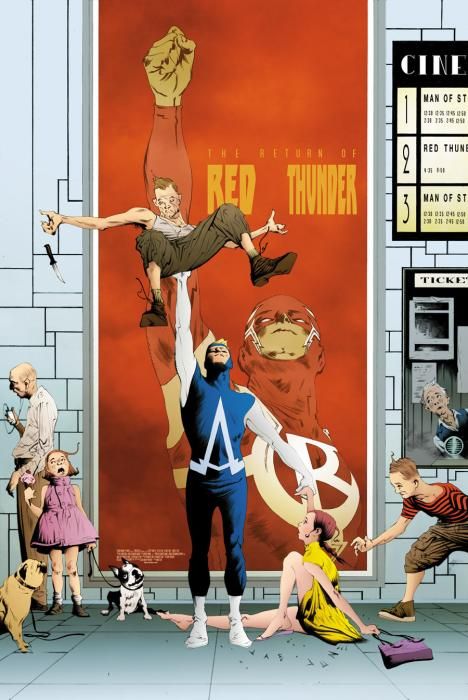The first time that Jeff Lemire and John Paul Leon visited Buddy Baker's starring role in "Tights" (back in "Animal Man" #6) it was a surprising and fun diversion into something a little different than normal. Revisiting "Tights" for a second time in "Animal Man" #20, though, it's hard to keep from feeling like this has been played out.
"Animal Man" #20 shows how Chaz's personal life is falling apart within the movie "Tights," and the slow descent of everything that he hopes and loves. It's clearly another analogy meant to parallel Buddy's life -- this time following the death of his son and the falling out with the Red -- but at this point, we already get it. It's not bringing anything new to the narrative, and the initial surprise of what Buddy's films look like has been supplanted with a small touch of boredom. Aside from a two-page sequence at the end set in the real world, reading "Animal Man" #20 made me wonder for a split second if we'd just ended up with a reprint of "Animal Man" #6 instead.
I do like Leon's art, though, which once again looks like it was carved rather than drawn. There's something beautiful about the rough-hewn nature of his pages that always grabs my attention. Leon uses large, thick black pools of ink rather than lots of fine lines, and the end result is different than most artists these days. Characters are almost defined by shadows and darkness; add in some flat and attractive colors from Lovern Kindzierski (who clearly knows how bad gradients would look with this art style) and you end up with a comic that at times feels almost like a carefully painted piece than inks and computer colors.
If I hadn't ever read "Animal Man" #6, I suspect I would be more entranced with the end result of this comic. For readers who have been around since the beginning, though, "Animal Man" #20 feels more than a little disappointing. With the book going through so many twists and turns in the last couple of months, this comes across as a fill-in rather than an important part of the overall "Animal Man" saga. The final two pages (with art from Timothy Green II and Joseph Silver) show some promise, but right now my enthusiasm has been temporarily shot.

